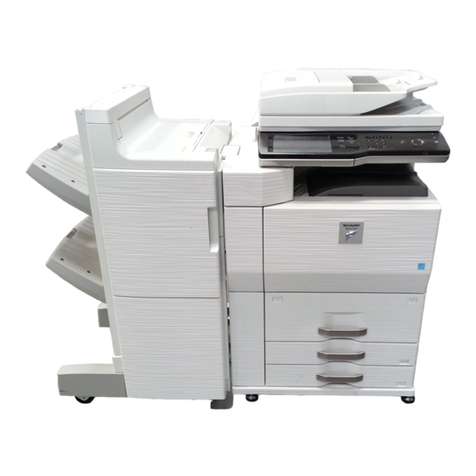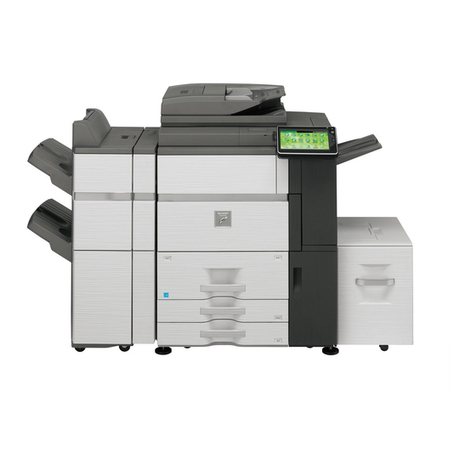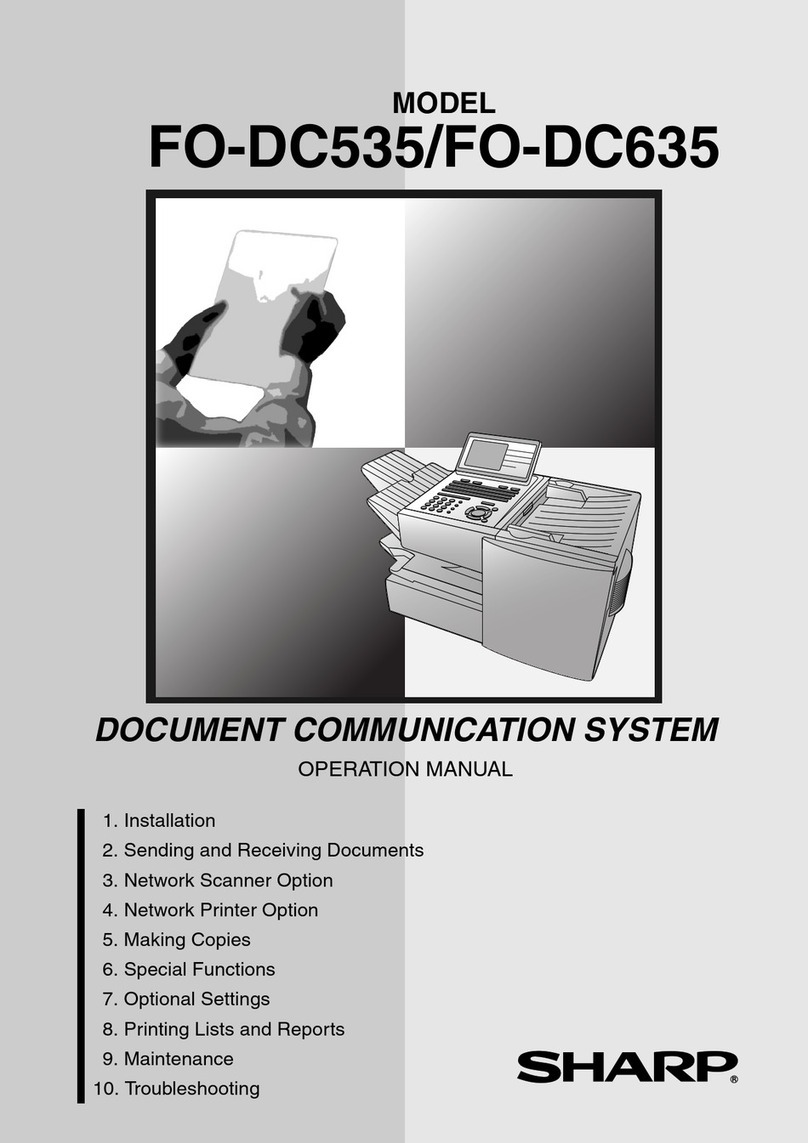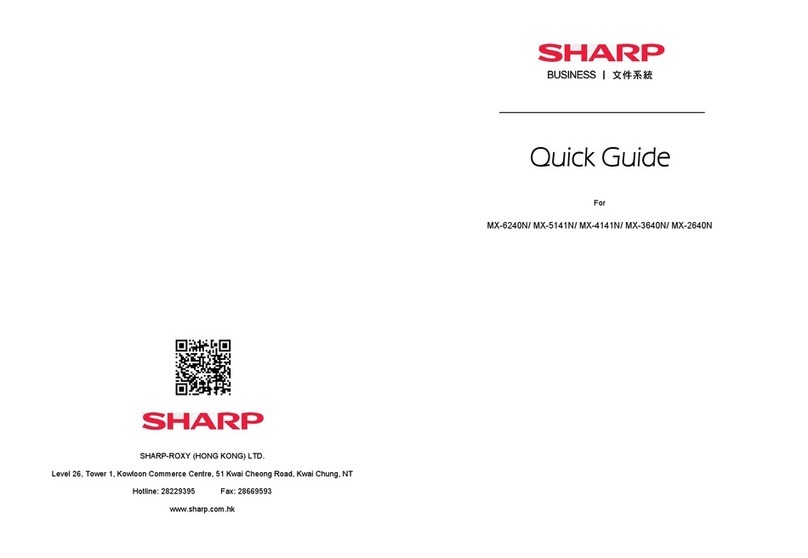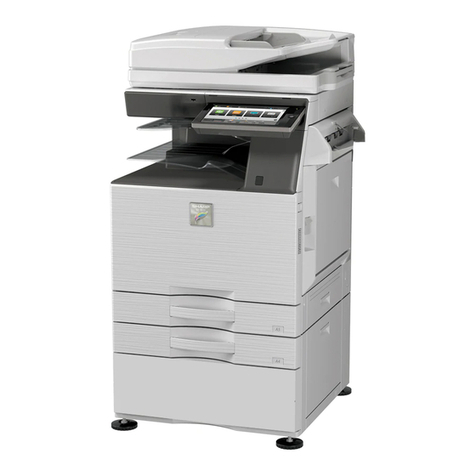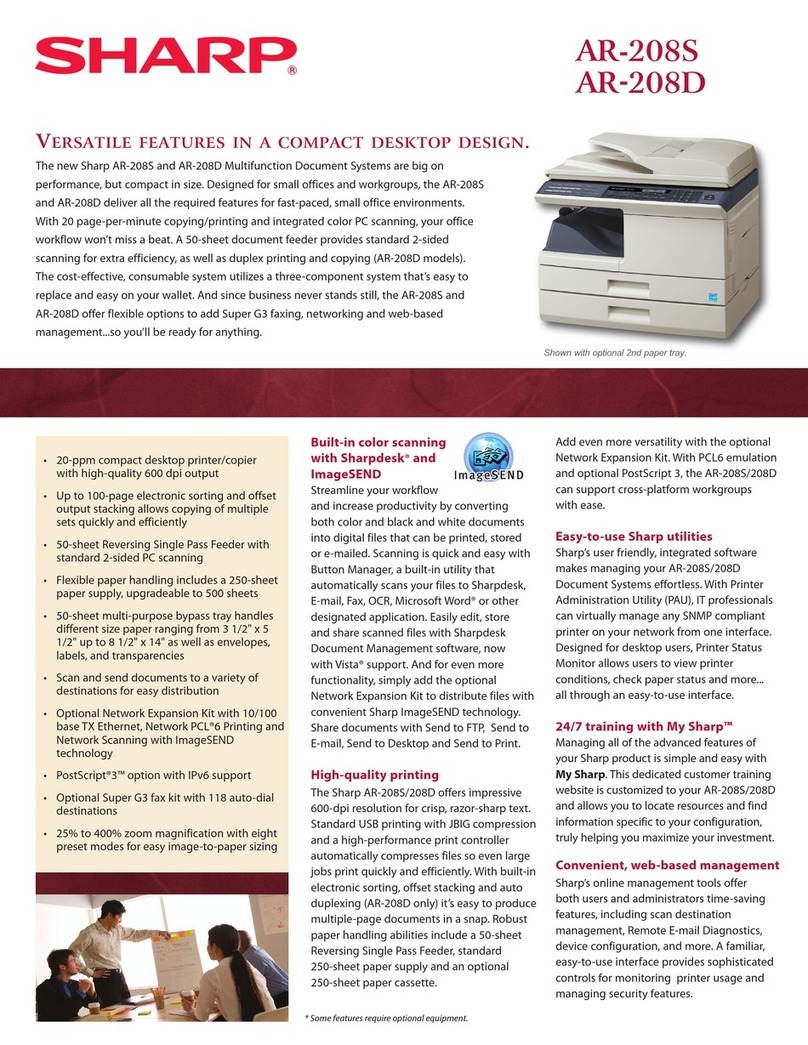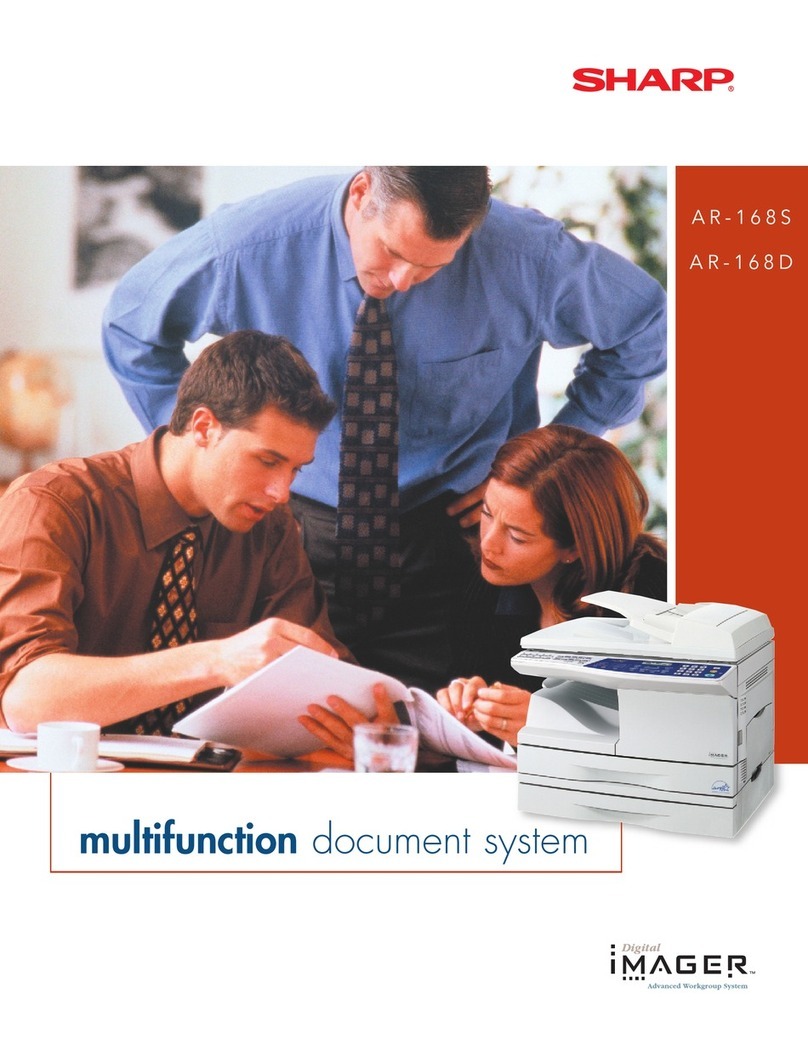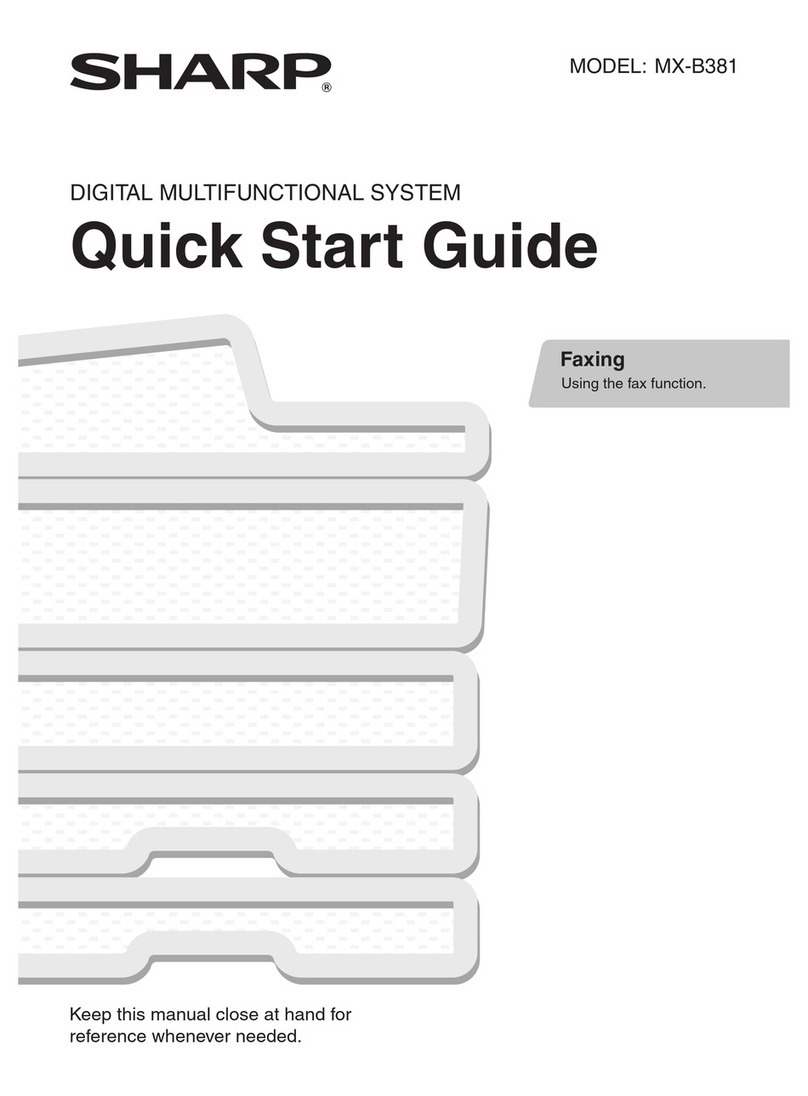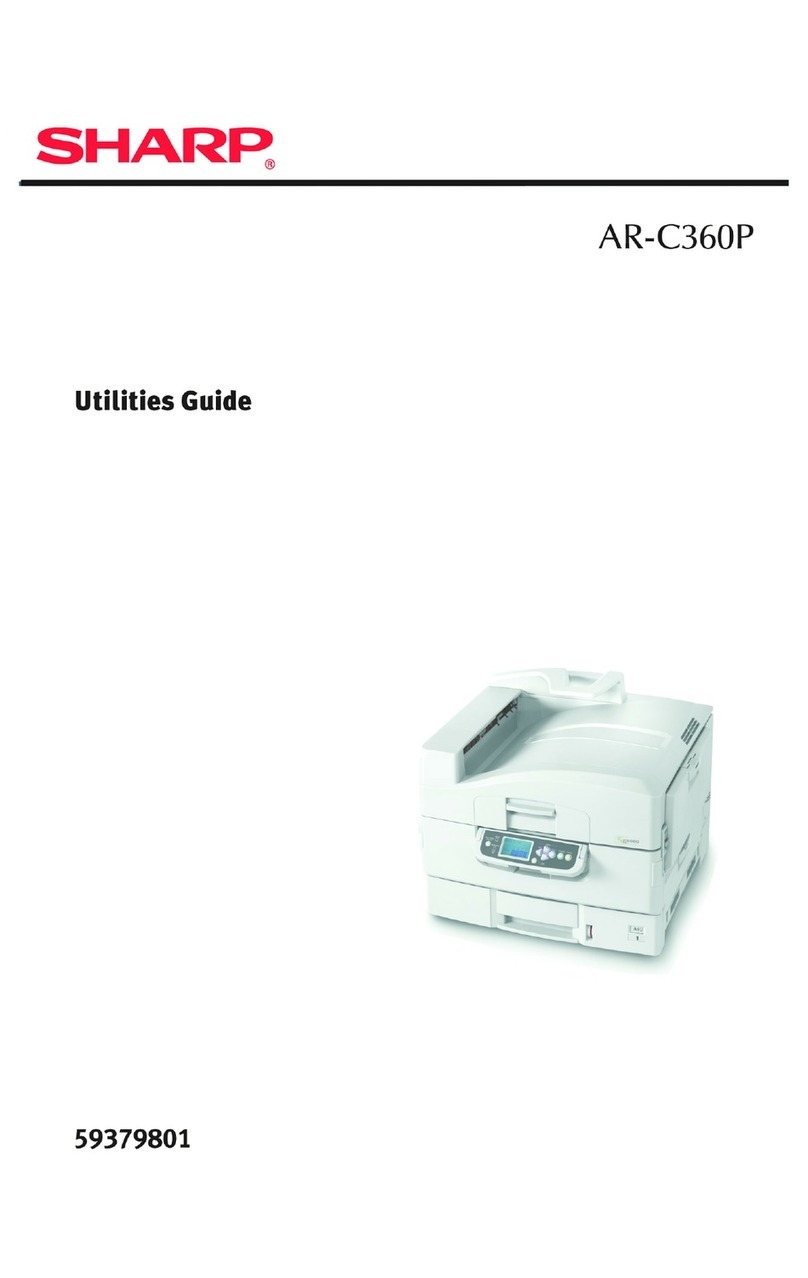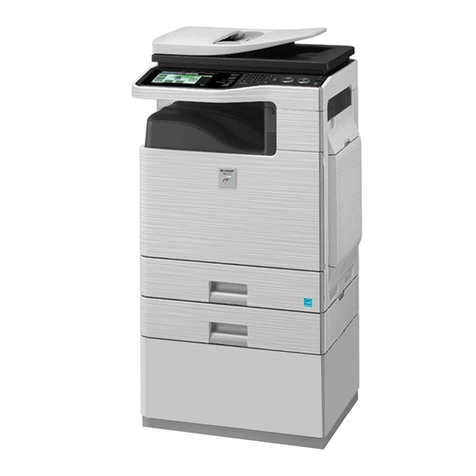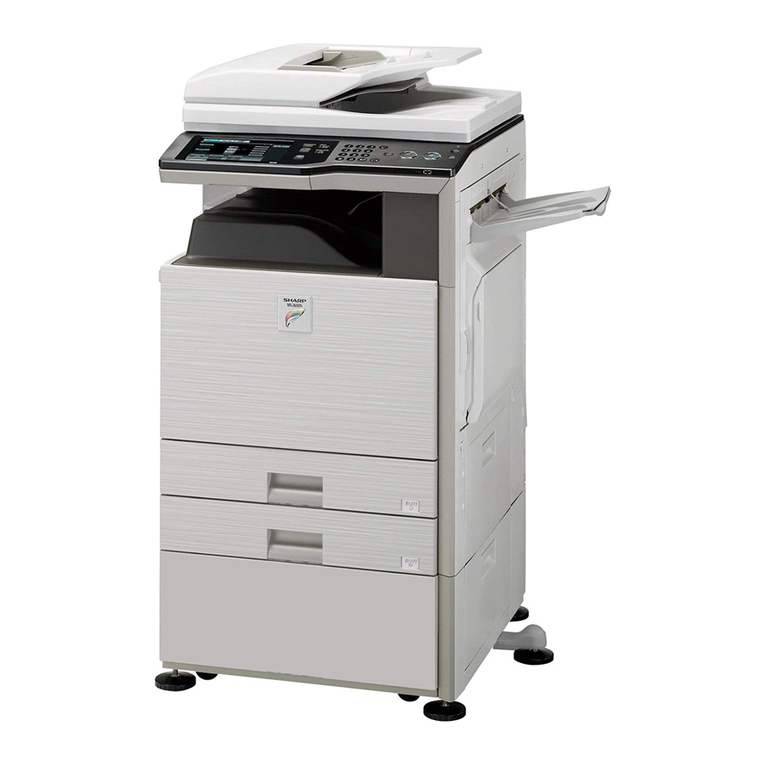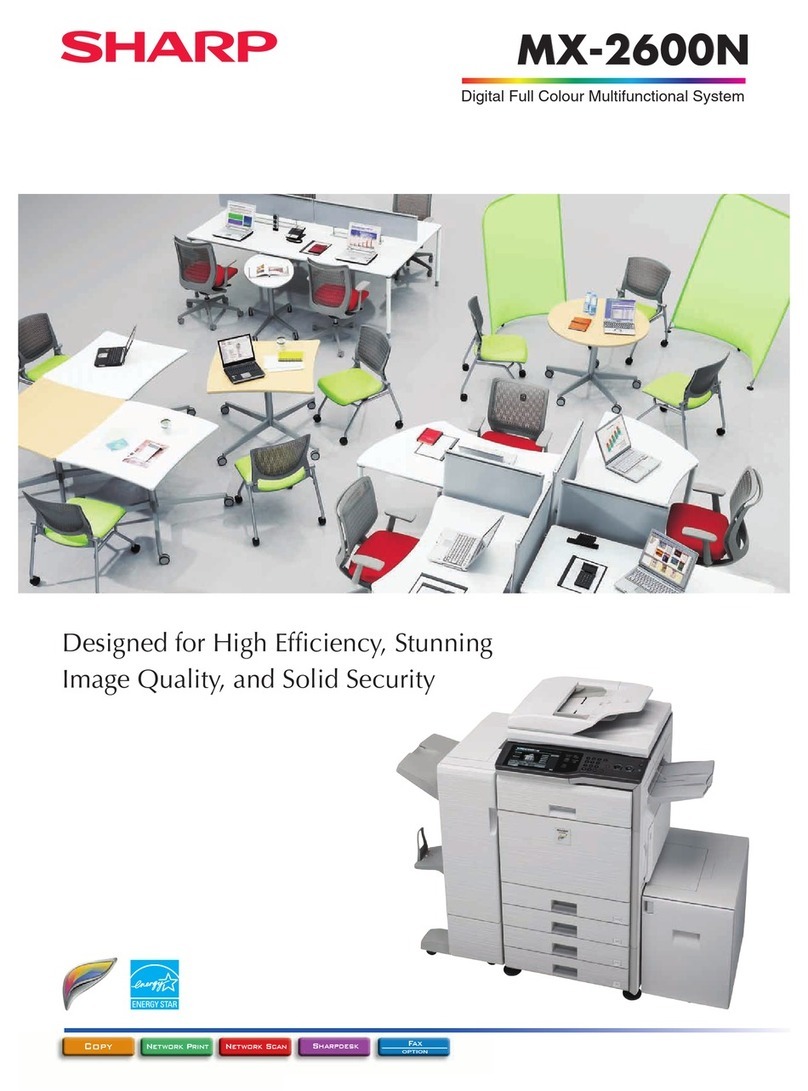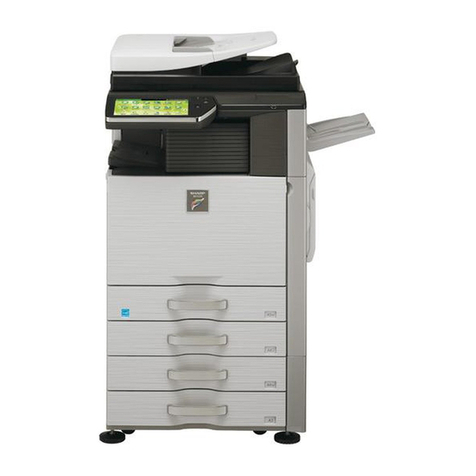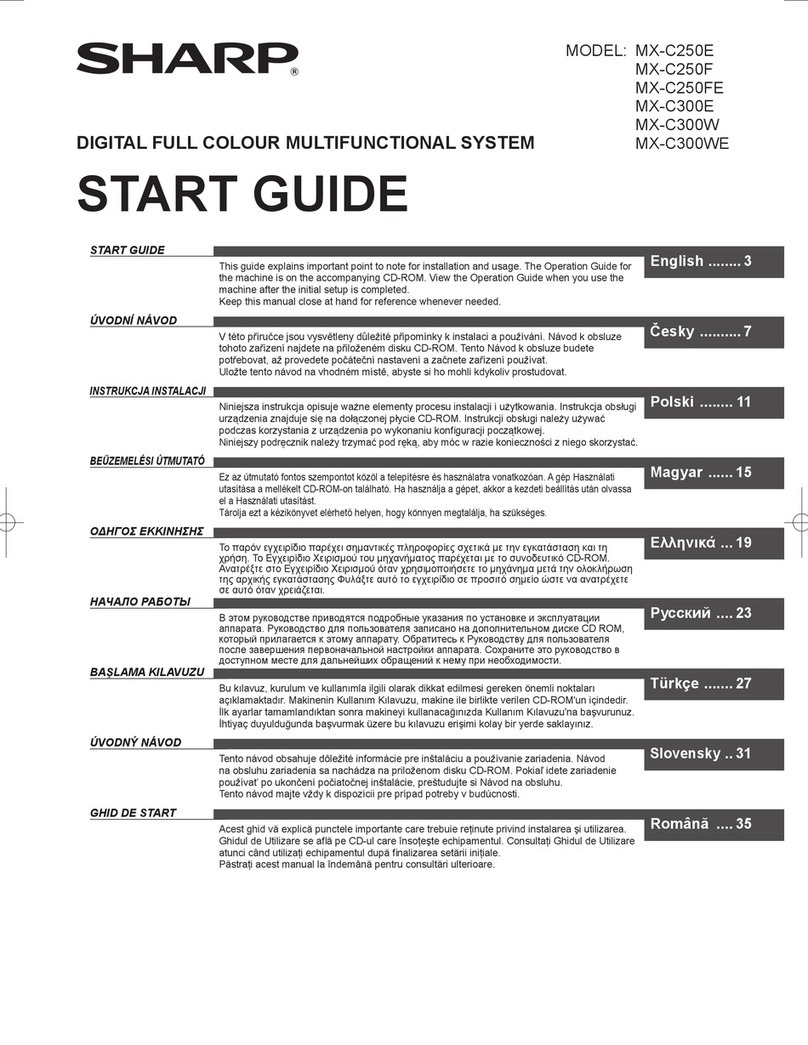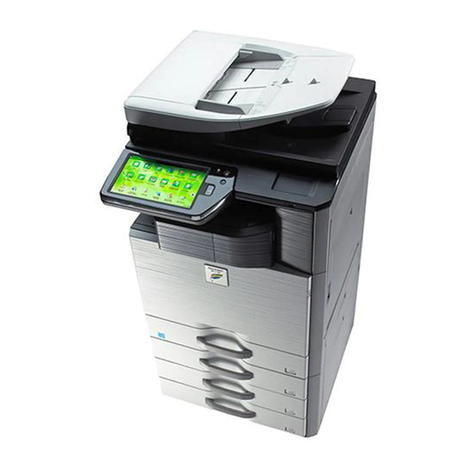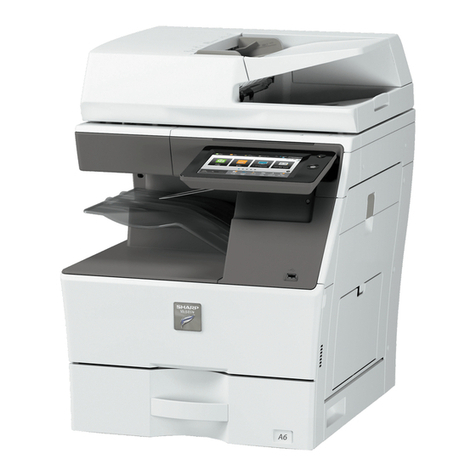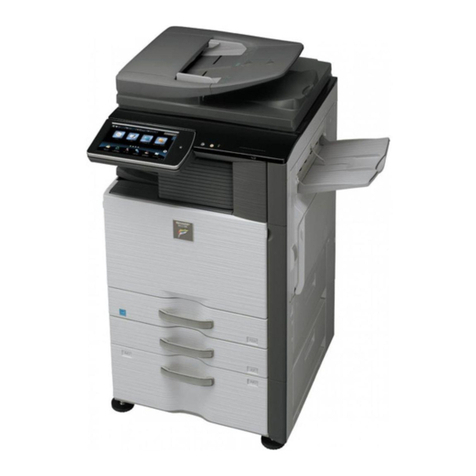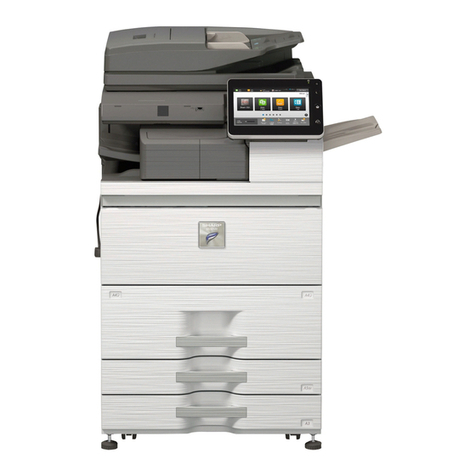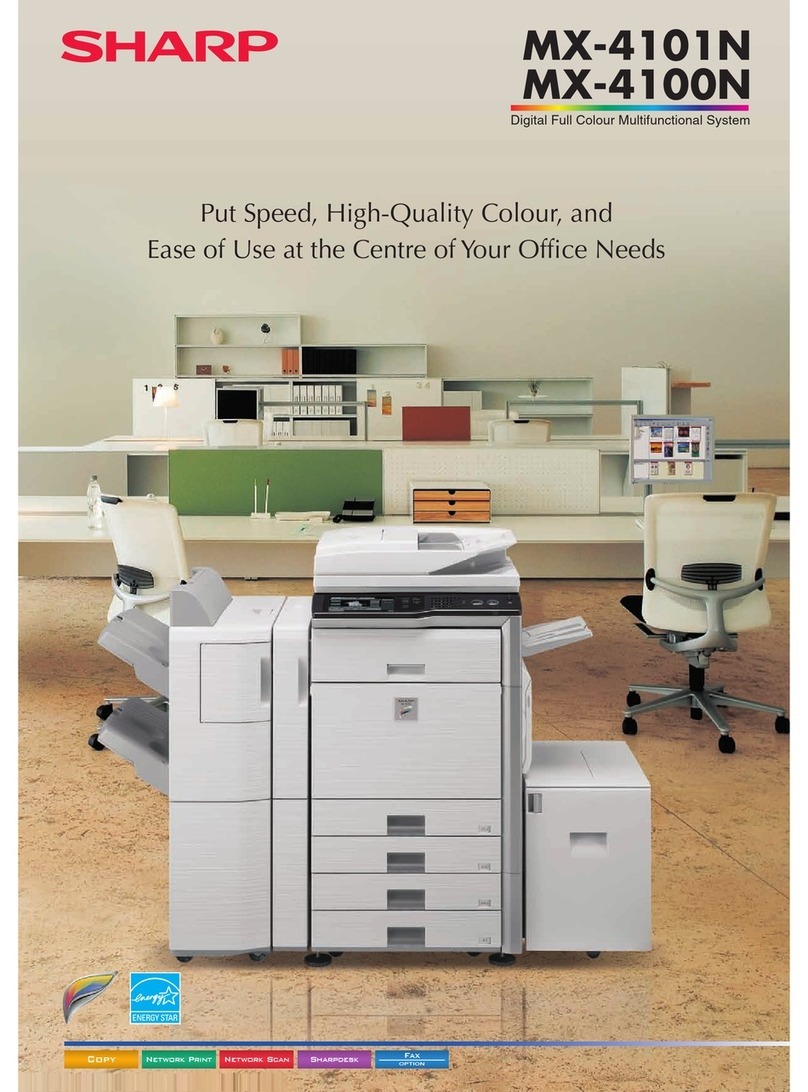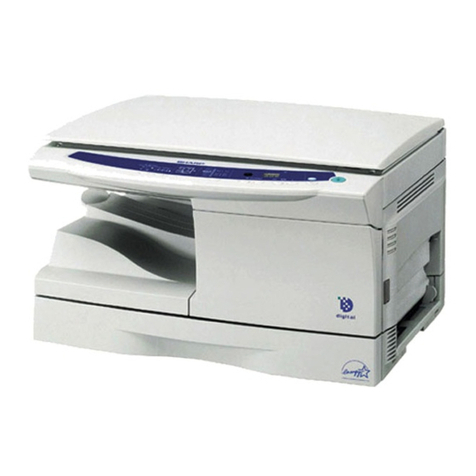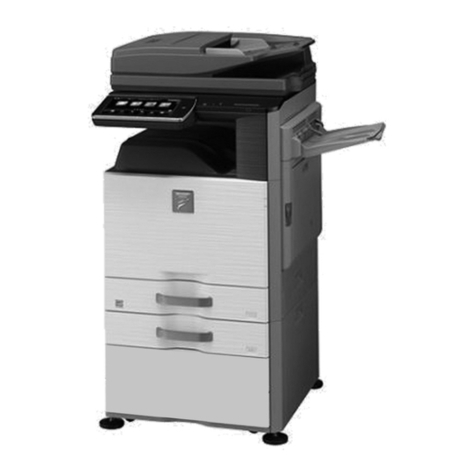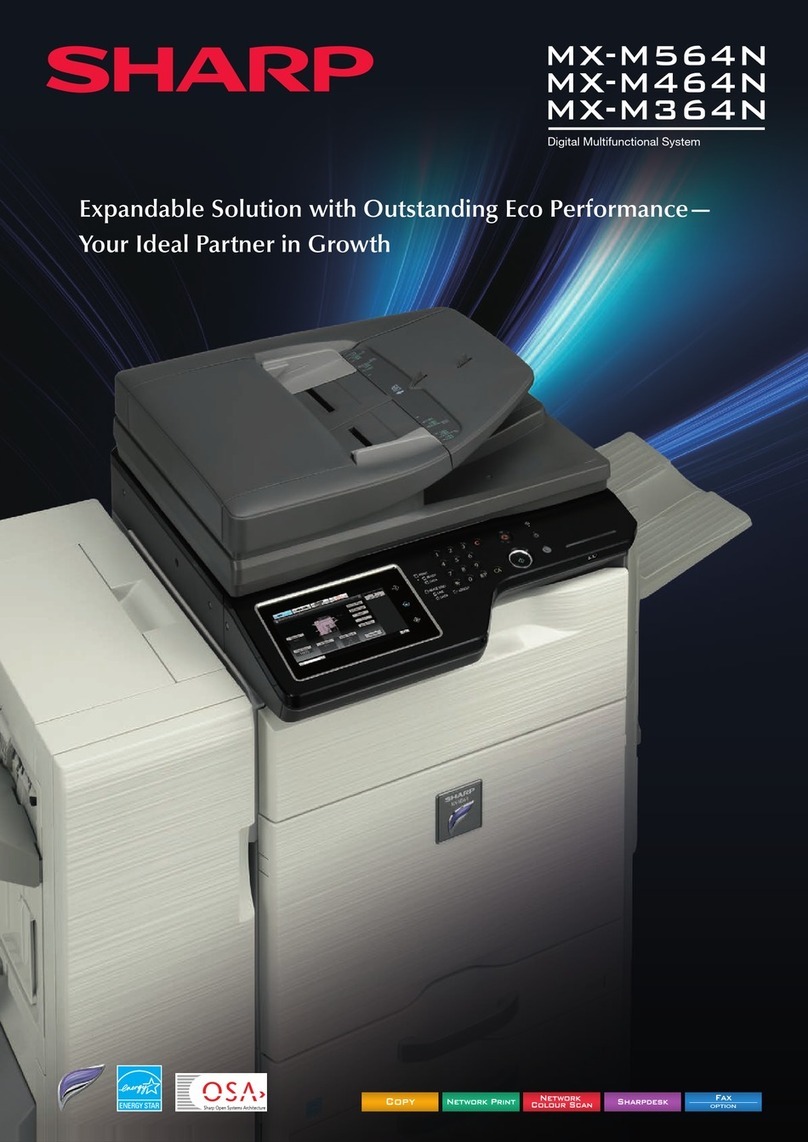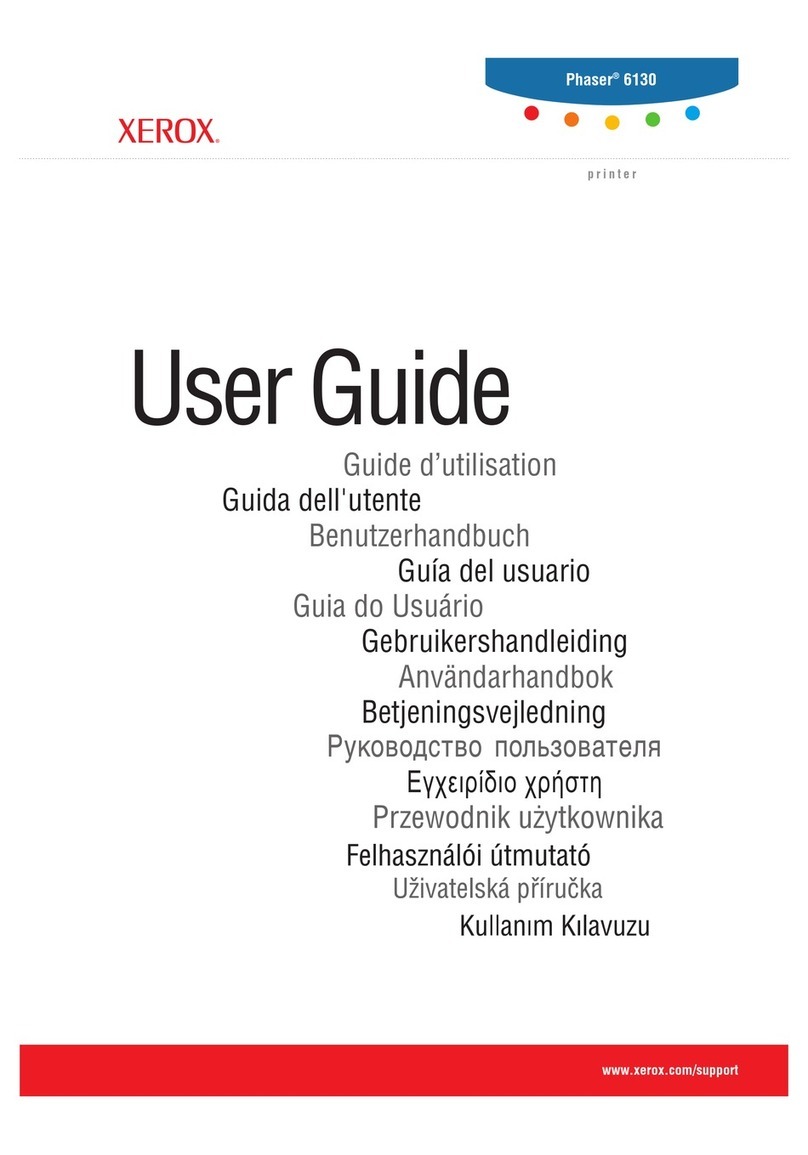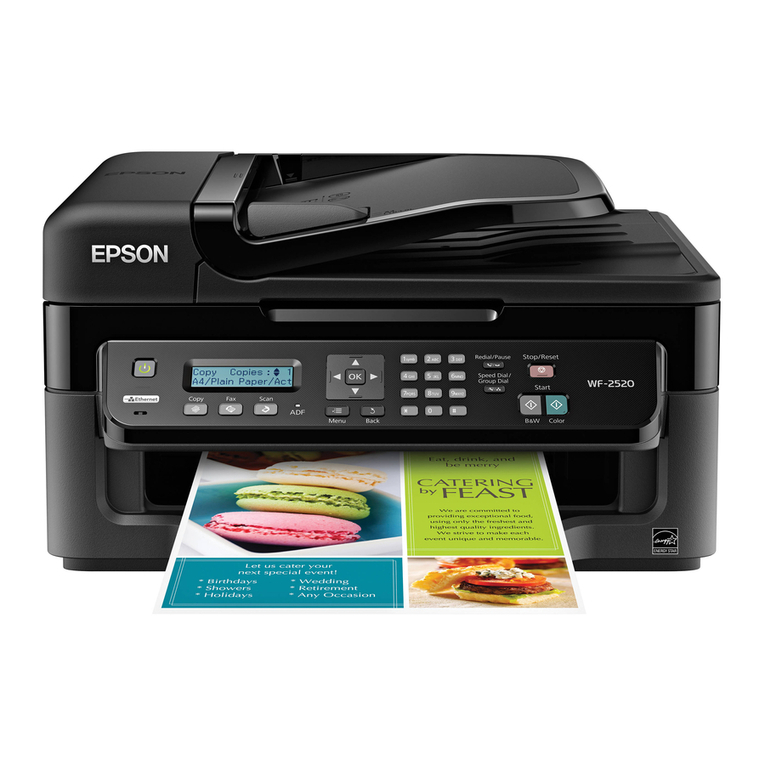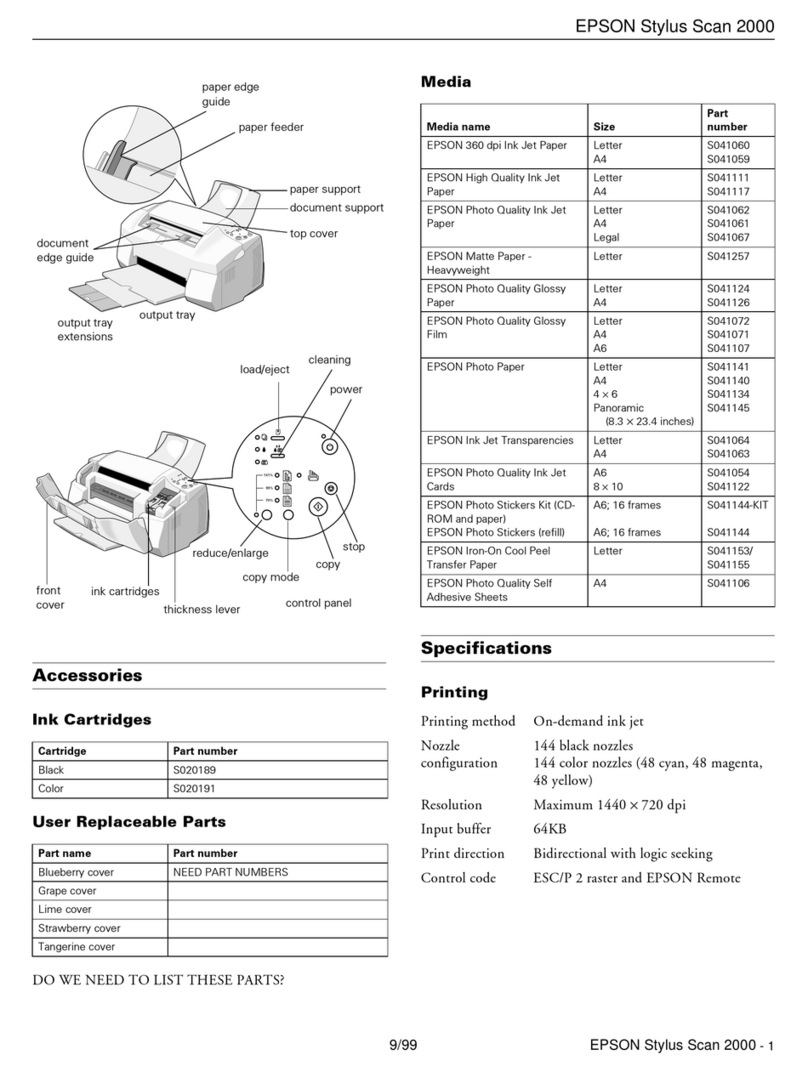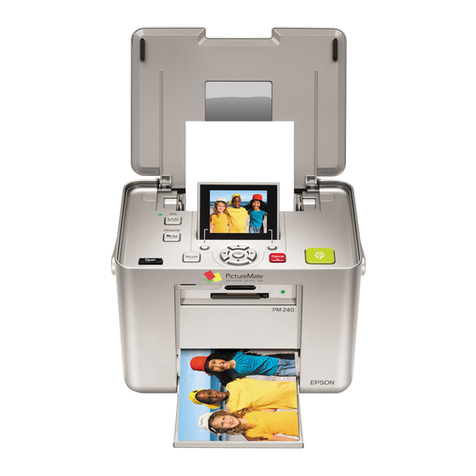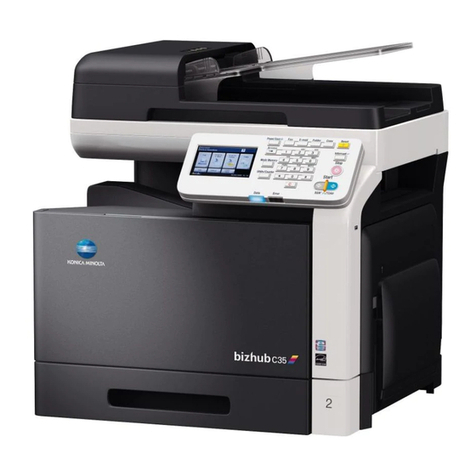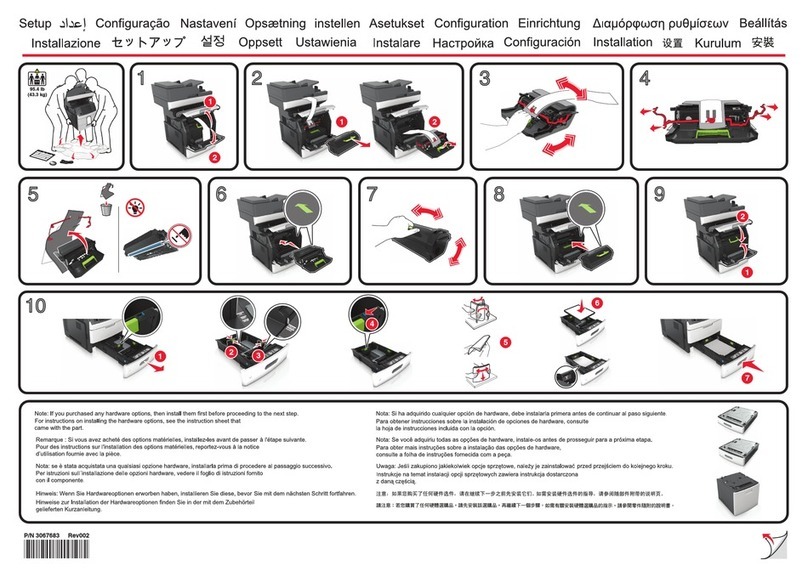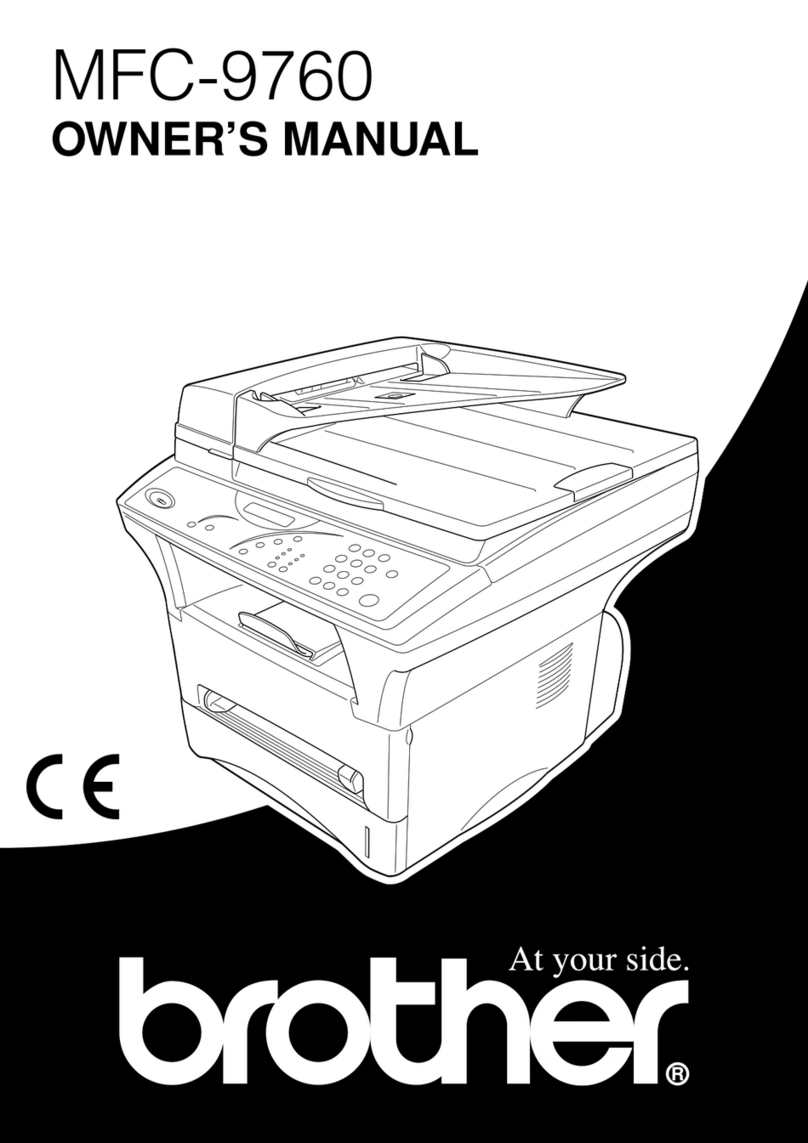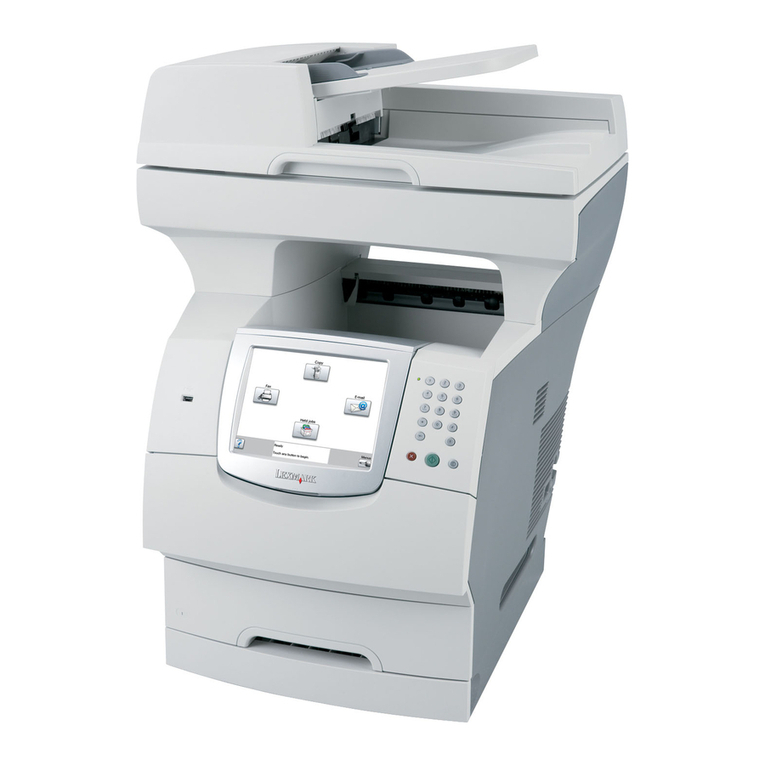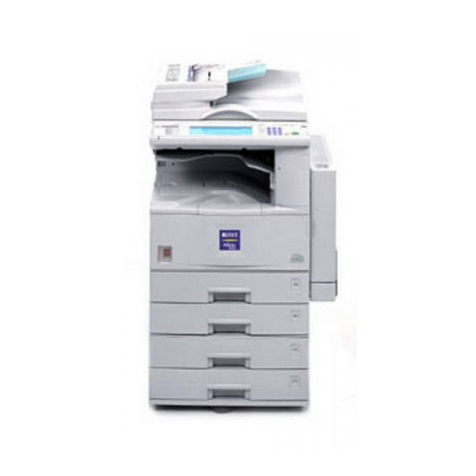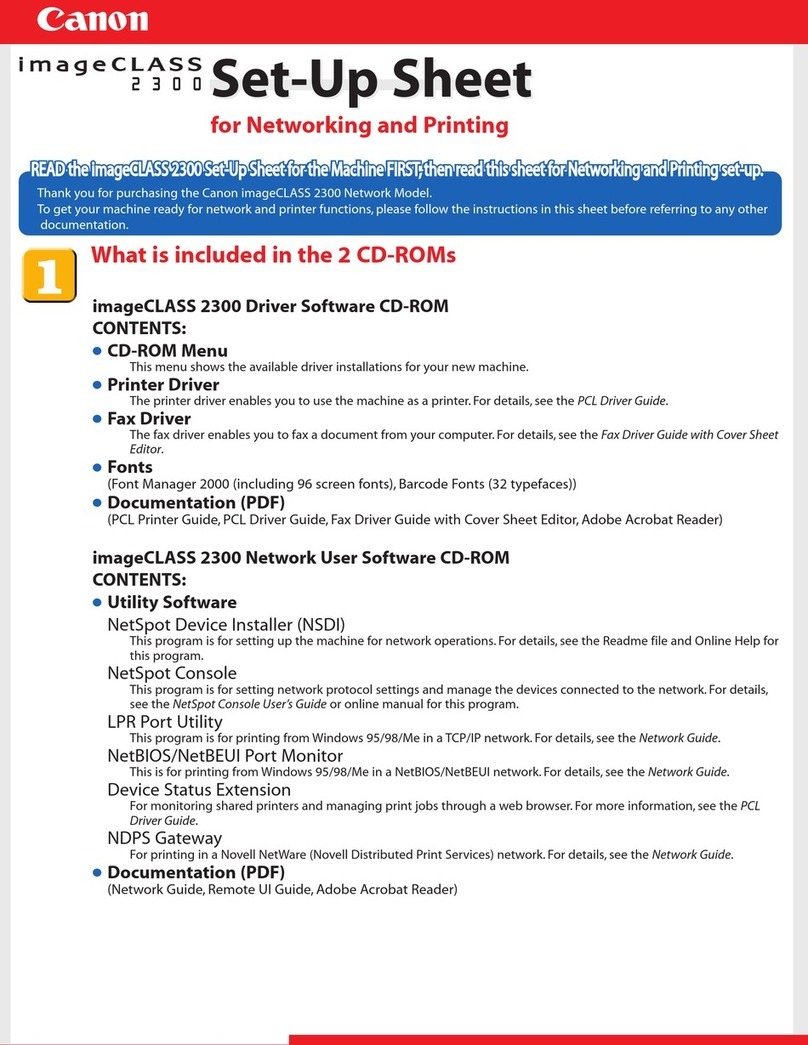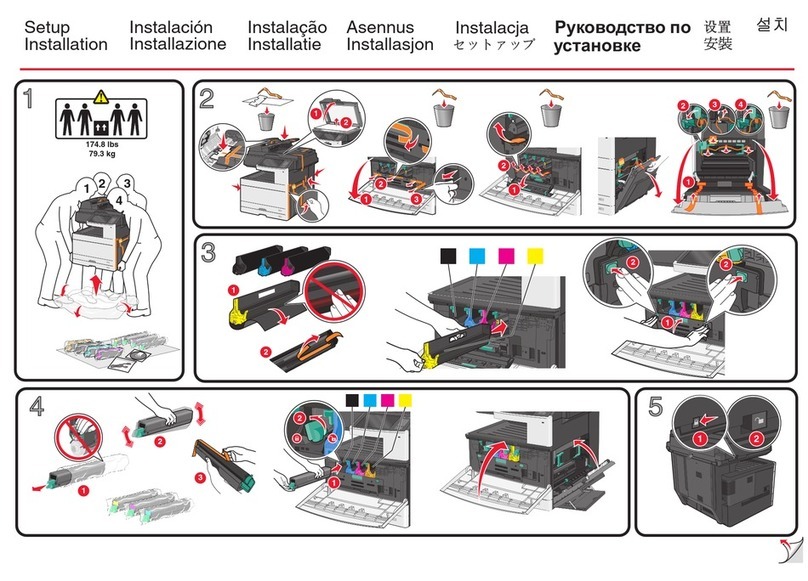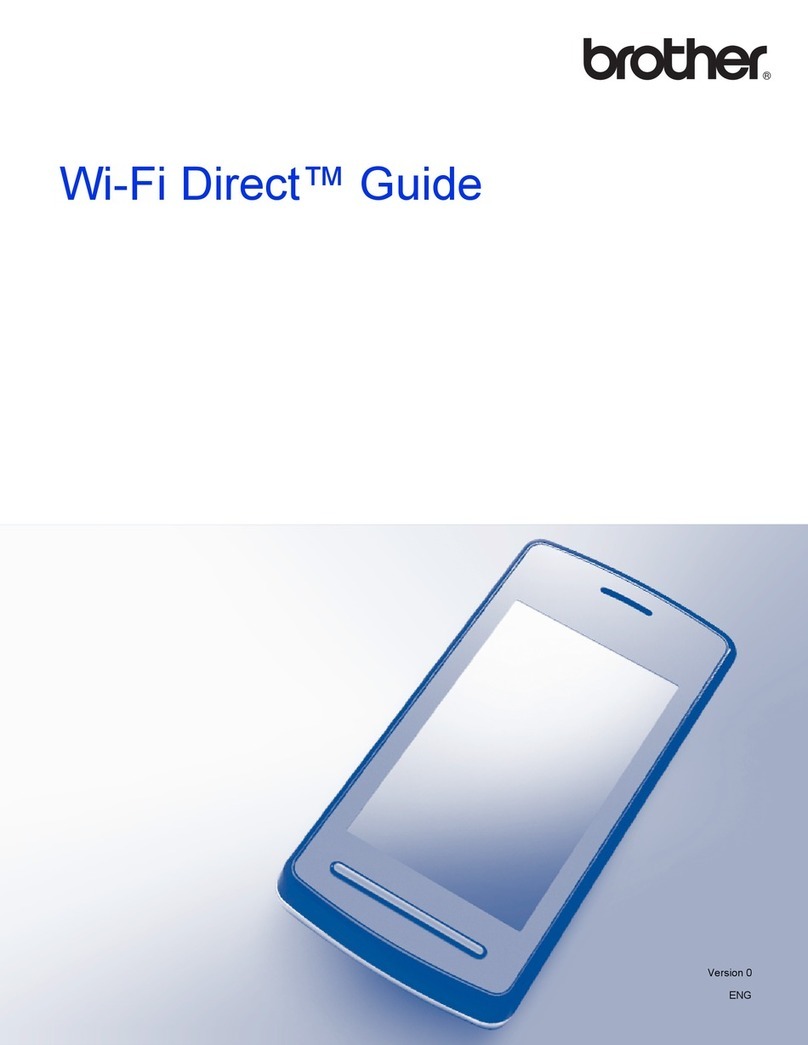
MX-LCX3N OPERATIONAL DESCRIPTION 5 – 1
MX-LCX3N Service Manual
[5] OPERATIONAL DESCRIPTION
1. Lift operation
A. Lifting by insertion of the tray
When insertion of the tray is detected, the tray is locked by the tray
lock solenoid so that the tray cannot be pulled out.
When tray lock is settled by turning ON the tray lock sensor (LTLD),
the lift motor is turned ON to lift the tray.
When the tray is lifted, the tray LED blinks and stops at the paper
feed position (upper limit) by turning ON the upper limit sensor
(LUD).
When the tray stops at the paper feed position (upper limit), the tray
LED turns on.
When the paper empty sensor (LPED) turns ON within 1097 pulses
of the encoder signal from start of the tray lifting, the lift motor is
turned OFF to stop the tray, and the paper feed solenoid (LPFS) is
turned ON to lower the pick roller.
After that, the lift motor is turned ON again to lift the tray and stop it
at the upper limit sensor (LUD) ON position.
When the paper empty sensor (LPED) does not turn ON within
1097 pulses, the paper feed solenoid (LPFS) is turned ON with the
lift motor ON to lower the pick roller. The lift motor is stopped at the
upper limit sensor (LUD) ON position and the paper feed solenoid
is turned OFF.
Lifting (When LPED turns ON within 1097 pulses during lifting)
Lifting (When LPED does not turn ON within 1097 pulses dur-
ing lifting)
B. Lowering operation by paper empty detection
or pressing the tray SW
When the paper empty sensor (LPED) turns OFF with the tray at
the paper feed position (upper limit) or when the tray SW (LTLSW)
is pressed, the tray is lowered by 542 pulses of the encoder signal
and stopped at the paper supply position.
When the lower limit sensor (LDD) turns ON before lowering the
tray by 542 pulses of the encoder signal, the lift motor is turned
OFF to stop the tray.
When the tray is moving down, the tray LED blinks. When the tray
is stopped at the paper supply position, the tray LED turns OFF.
When the tray is stopped at the paper supply position, the tray lock
solenoid releases the lock so that the tray can be pulled out.
When the tray is lowered with the paper empty sensor (LPED) OFF,
the tray remains at the paper supply position and the tray lock is
released.
When the tray is lowered by pressing the tray SW (LTLSW), if the
tray is not pulled out from the paper supply position for 90sec, the
tray lock solenoid locks the tray. When the tray is locked securely,
the lift motor is turned ON to lift the tray.
When the tray is lifting, the tray LED blinks. When the upper limit
sensor (LUD) is turned ON, the tray stops at the paper feed position
(upper limit).
When the tray stop at the paper feed position (upper limit), the tray
LED turns ON.
Lowering operation (when paper empty is detected)
Lowering operation (when tray SW is pressed)
LLM
(Lift motor output)
LDD
(Lower limit sensor)
LUD
(Upper limit sensor)
LPED
(Paper empty detection)
LPSL
(Solenoid) Within 1097 pulses
LRE
Encoder si
nal
200msec
LLM
(Lift motor output)
LDD
(Lower limit sensor)
LUD
(Upper limit sensor)
LPED
(Paper empty detection)
LPSL
(Solenoid)
LRE
(Encoder signal)
1097
LLM
(Lift motor output)
LDD
(Lower limit sensor)
LUD
(Upper limit sensor)
LPED
(Paper empty detection)
LTLSW
(Tray SW)
LRE
Encoder si
nal
542
LLM
(Lift motor output)
LDD
(Lower limit sensor)
LUD
(Upper limit sensor)
LPED
(Paper empty detection)
LTLSW
(Tray SW)
LRE
(Encoder signal)
Less than 542
